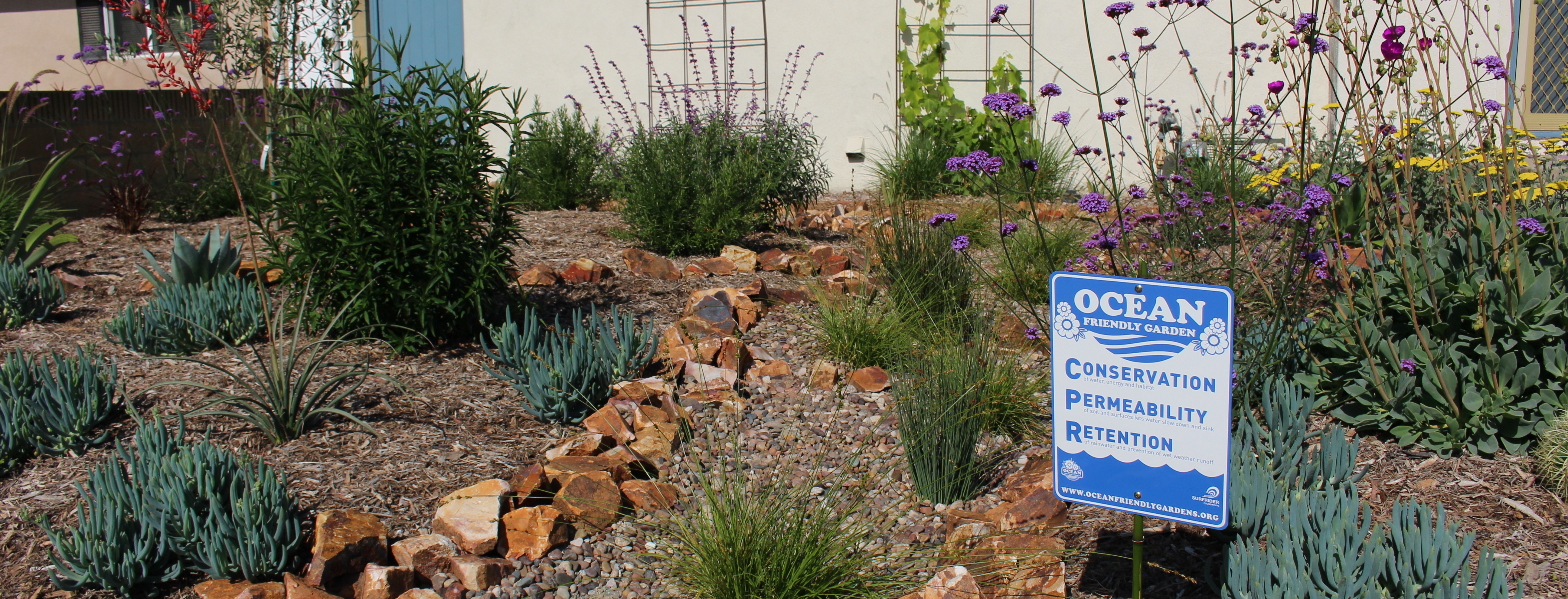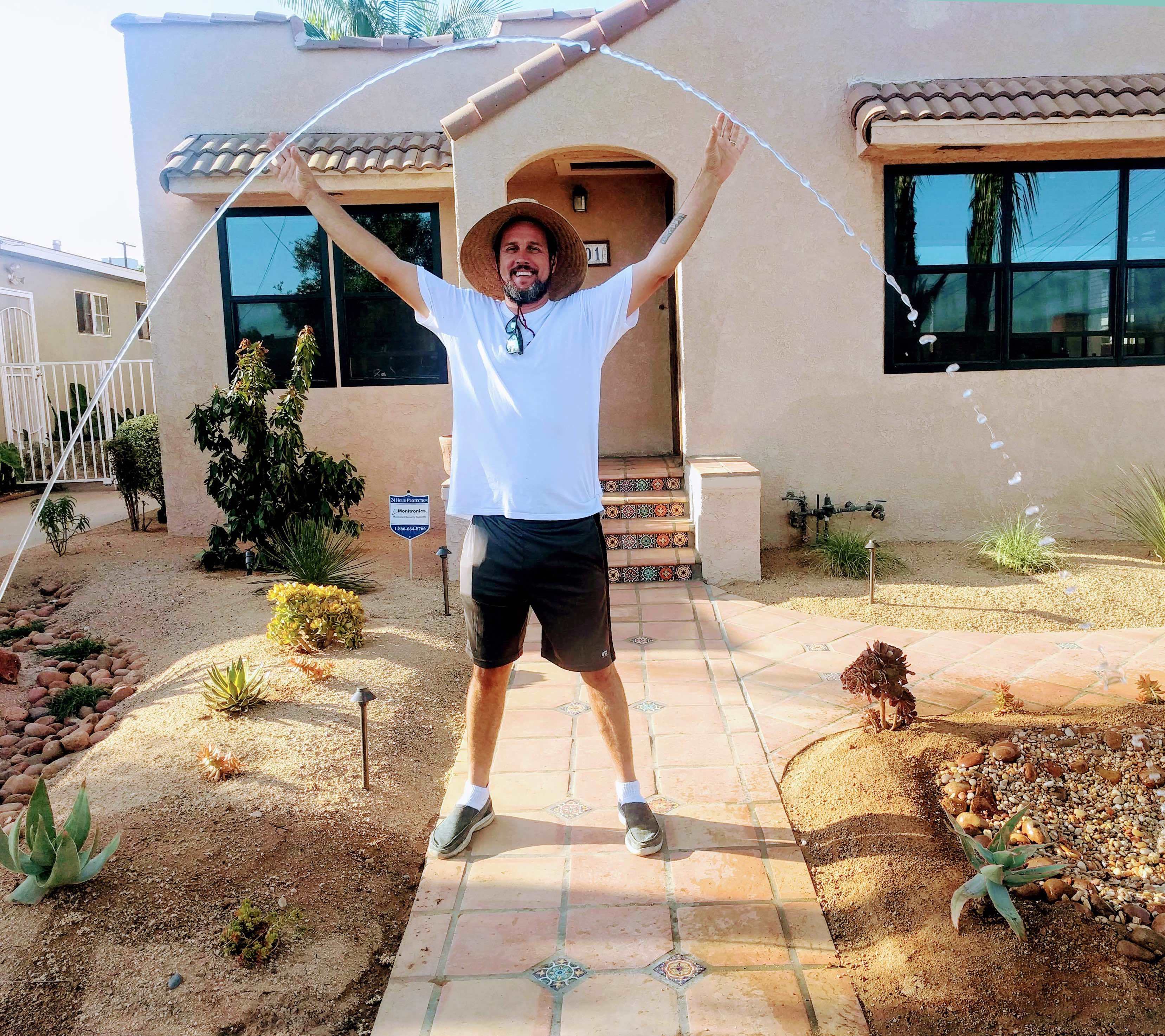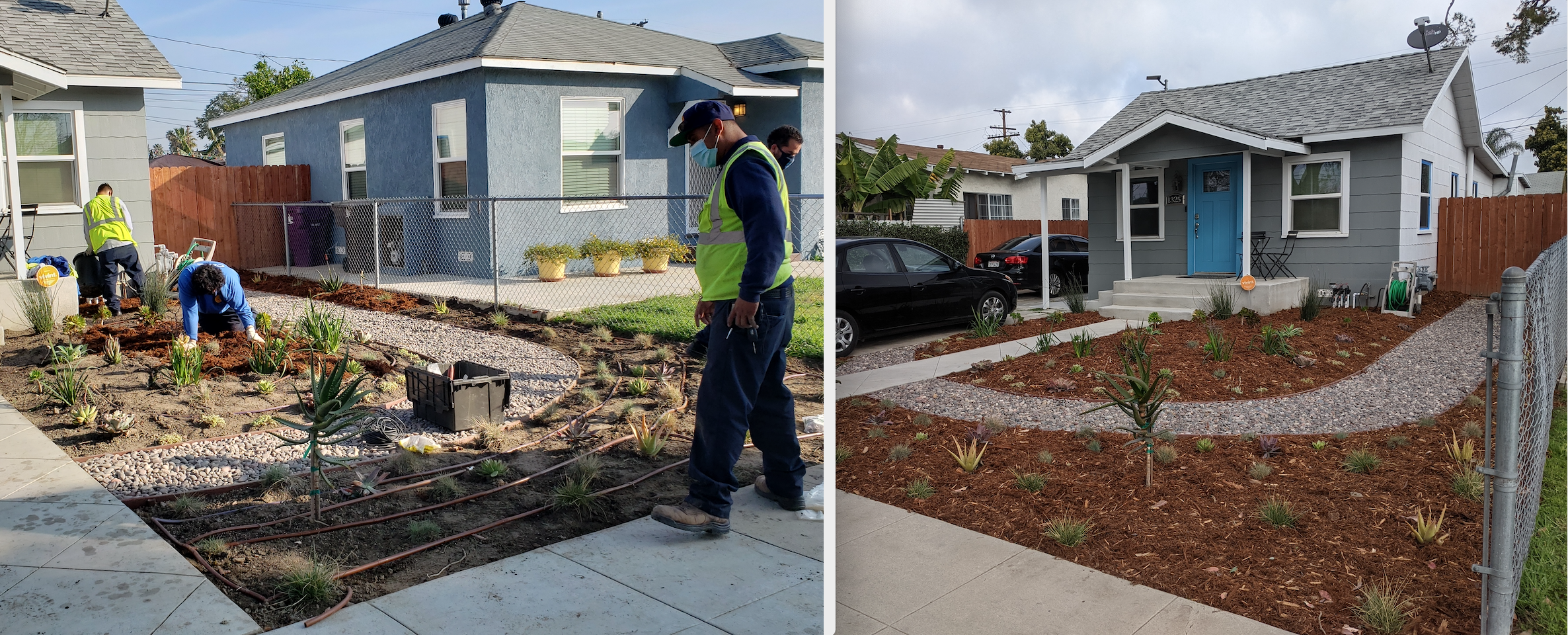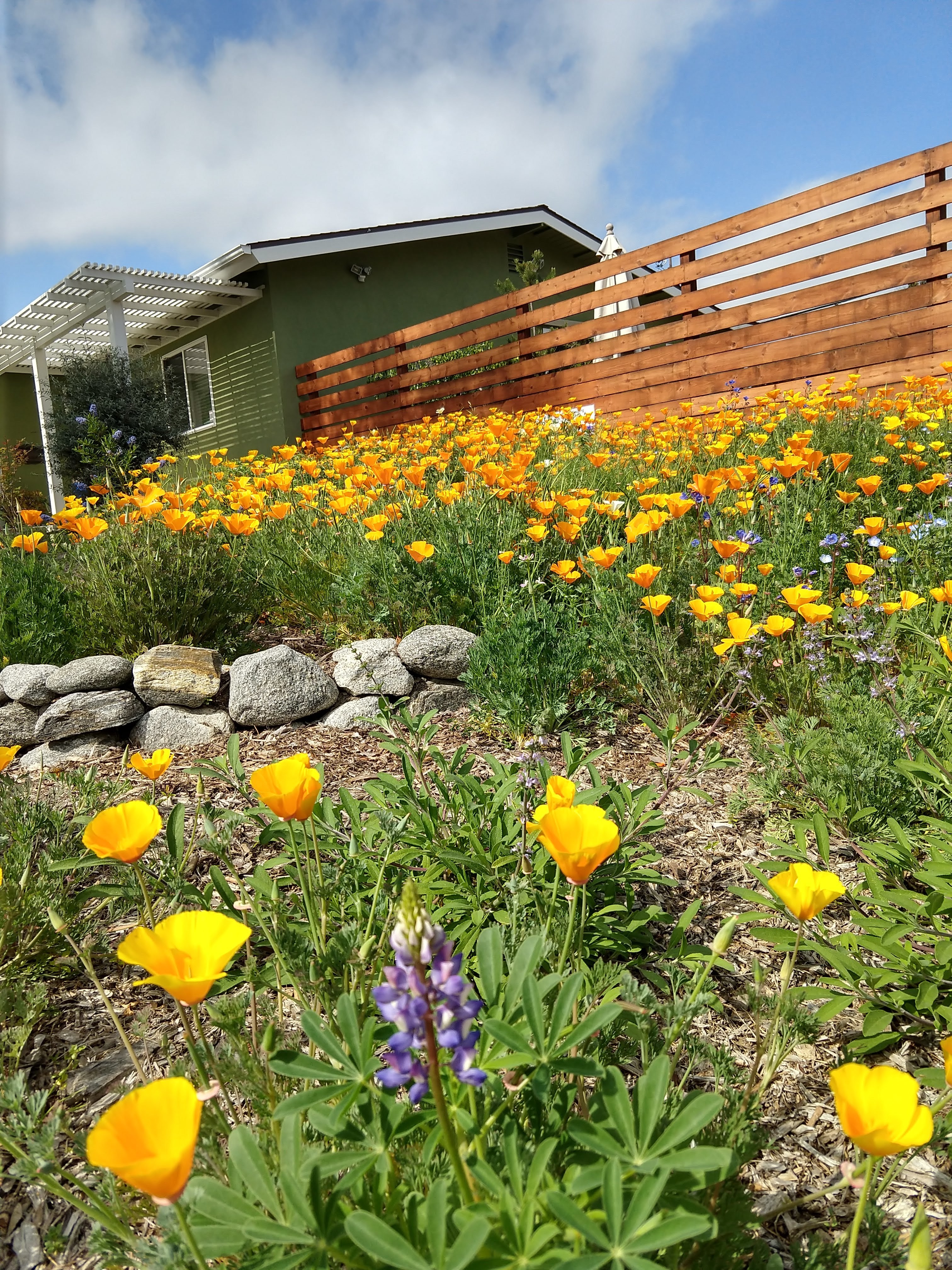
05.17.21
Transforming Neighborhoods with Ocean Friendly Gardens in Long Beach, California
By Mara Dias
While the COVID-19 pandemic severely limited the ability of Surfrider chapters to host in-person Ocean Friendly Gardens events, the groundwork that the Long Beach Chapter has established over the past decade turned 2020 into one of its most successful years yet.
The Long Beach Chapter’s Ocean Friendly Gardens (OFG) program has been led by a landscape professional, Kai Craig, whose business California Eco Design follows a watershed-wise approach to turn their client’s yards into beautiful, functioning ecosystems. Kai applies the experience he has gained from running his business, as well as past experiences working with Los Angeles watershed protection and biodiversity projects, to educate the Long Beach Chapter and their community on how they can turn their water guzzling lawns into Ocean Friendly Gardens. The Long Beach chapter provides OFG information to their community at their tabling events and Kai shares his expertise to advise interested homeowners on how to convert their own lawns. Kai also gives presentations to community groups, such as local garden clubs, on the benefits of Ocean Friendly Gardens and how to incorporate the watershed approach into garden design and care. He also usually gives a talk on how to capture stormwater in residential landscaping at the big Long Beach Water Lantern Festival every year (pre-COVID).

Long Beach OFG Coordinator, Kai Craig
Kai has been a very effective spokesman for the Ocean Friendly Gardens program by participating in several Long Beach City planning efforts. He also advocates for changes to policies and programs aimed initially at water conservation and drought resiliency to better address stormwater runoff and water quality protection. For instance, largely in response to the OFG guidance that Kai has provided, the Long Beach Lawn to Garden program has evolved over the past 10 years to not only offer financial incentives to city residents to swap out their water guzzling turf grass for drought-resistant plants, but the program also now emphasizes and rewards efforts to also install stormwater retention features, native plants that create wildlife habitat, and the use of mulch and other natural materials. These are all core foundations of the Ocean Friendly Gardens program!
While the Lawn to Garden program has helped transform some neighborhoods into more water-wise landscapes, it has been a challenge to effect real change in lower-income neighborhoods. To address this environmental justice issue, the Long Beach Water Department created the Direct Install Program (DIG) to better serve residents in low-income neighborhoods that are affected by pollution. With funding provided by California Coastal Conservancy and labor provided by the Conservation Corps, this program allows qualifying homeowners to select from six different garden designs to be installed in their yards, free of charge. Kai designed the garden templates to meet Surfrider’s Ocean Friendly Gardens criteria and the DIG program’s goals of reducing runoff, conserving water and creating wildlife habitat. DIG also emphasizes the climate change benefits of native plants and healthy, biologically active soils in capturing and storing carbon dioxide in the soil. While the roll-out of this program was slow due to the impacts of the COVID-19 pandemic, six gardens have been installed in North Long Beach. The program partners hope to complete 25 in total.

Yard retrofit in North Long Beach (photo credit: Long Beach Water Department DIG program)
Meanwhile, the Long Beach Chapter’s OFG program continues to adjust to a new normal under the pandemic to virtually advise homeowners on how to transform their yards into Ocean Friendly Gardens and howto post signs where OFG criteria has been met. They are also looking forward to holding in-person events again once health and safety restrictions are lifted, in addition to hosting an Ocean Friendly Gardens tour and developing new opportunities for volunteers to participate in the program. Ultimately, their goal is to educate their community on how everyone can take steps in their own yard to help reduce the amount of pollution that flows downstream to the beach where we all love to play.

